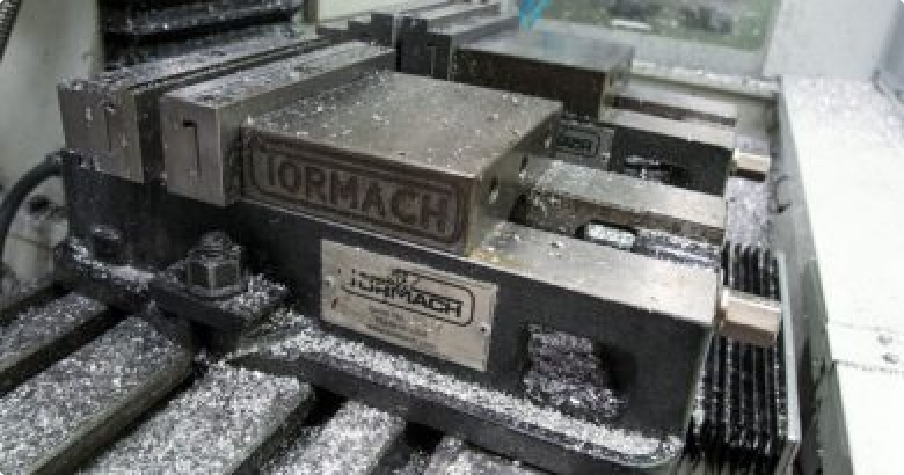Making Sense out of Tool Pull out Greg mentioned last week that we were putting the finishing touches on a report about collet slip. Why? It just always bugged us when we heard about it, as its been our strong belief that with a properly maintained system, pull out shouldn't happen. Its never been an issue in our shop in Waunakee, and it wasn't like we had some secret techniques we did here nobody else knows about. We just use common sense - keep tools clean and occasionally lubricate the drawbar. The fact is, with enough force, you can pull a tool out of a collet. But how much does it take? We designed our test to measure static pullout force of a tool from a TTS (modified R8) collet, and looked at a number of scenarios - not so much as a way to identify the absolute best method, but as a clear demonstration of how not to do things. The test results validate what we always knew - if you properly prepare the mating surfaces and properly maintain (lubricate) the drawbar assembly, it takes alot - much more than the machine can actually pull up with. You're going to stall the spindle before the tool pulls out. You can read the entire report here, including a discussion of collets, test procedures, and data interpretation. Or you can skip ahead to the punchline and read the best practices recommendations below:
- General Recommendations:
1. Keep the shanks of collet mounted tools clean and dry. Tools must be cleaned when they arrive. The oil used to prevent rust during shipment is very detrimental to tool holding ability. Tools should be cleaned on occasion as they can accumulate way oil and oil from coolant emulsions. 2. Keep the inside of the collet clean and dry. Similar to the tools, collets must be cleaned of preservative oil when first received. 3. Lubricate the outside of the collet and the inside of the spindle taper with anti-seize lubricant. These are sliding surfaces and are best kept lightly lubricated. You can use Tormach PN 31273 or any other good quality anti-seize type lubricant. Lubricate sparingly to avoid risk of the lubricant migrating to the inside of the collet. Only the first inch of the spindle taper needs to be lubricated. 4. Lubricate the threaded section of the drawbar, the thrust shoulder, and the thrust washer with anti-seize lubricant. 5. Drawbar torque generally needs not exceed 30 ft lb unless extreme machining conditions are expected. Practical experience guides most machinists. It’s a lot of work to always tighten to 30 ft lbs and light machining, drilling, or use of small cutters simply does not require that much force. In addition, tightening more than needed reduces the life of the collet and drawbar. For extreme conditions you can use 40 ft lb of torque. 6. Inspect and replace the drawbar and collet as needed. A little lathe work can usually clean up a galled surface on the drawbar thrust shoulder, but noticeable wear at the threads suggests it’s time for a new drawbar. Both the drawbar and collet are wear items and should be replaced as necessary. If you need a new drawbar, it’s a good idea to replace the collet at the same time. Welcome to Colorado, PCNC Finally, something fun we got in the email box overnite. Here's a link we were sent from the proud owners of a new PCNC 1100 in Colorado - pictures of moving the mill into the shop with a creative use of whitewater rafting straps to balance the mill while its in the air. Pretty Gnarly - an A+ for resourcefulness (and extra credit for the sushi lunch break), but also a good reminder for why we designed the lifting bar kit. Thanks for sharing, guys!


